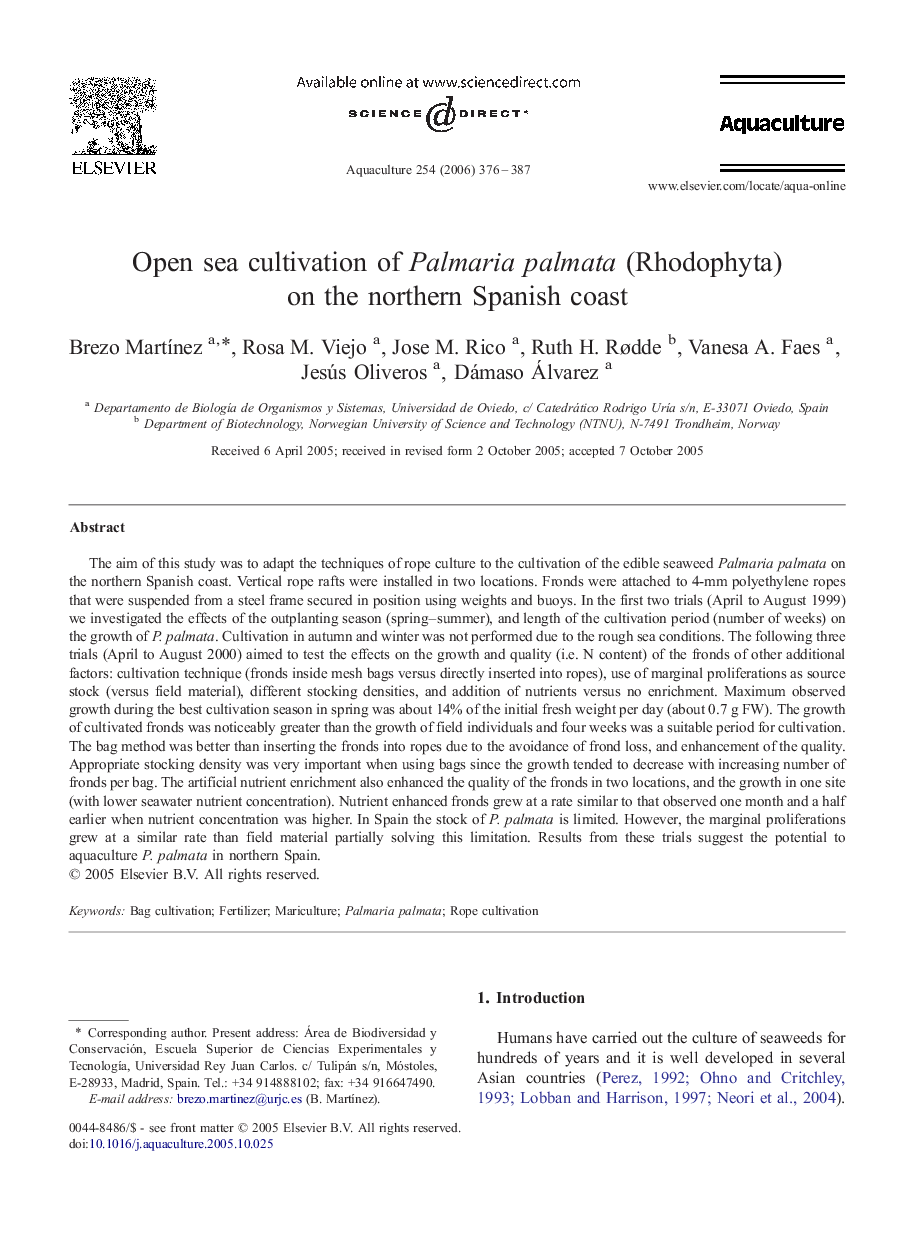| Article ID | Journal | Published Year | Pages | File Type |
|---|---|---|---|---|
| 2426010 | Aquaculture | 2006 | 12 Pages |
The aim of this study was to adapt the techniques of rope culture to the cultivation of the edible seaweed Palmaria palmata on the northern Spanish coast. Vertical rope rafts were installed in two locations. Fronds were attached to 4-mm polyethylene ropes that were suspended from a steel frame secured in position using weights and buoys. In the first two trials (April to August 1999) we investigated the effects of the outplanting season (spring–summer), and length of the cultivation period (number of weeks) on the growth of P. palmata. Cultivation in autumn and winter was not performed due to the rough sea conditions. The following three trials (April to August 2000) aimed to test the effects on the growth and quality (i.e. N content) of the fronds of other additional factors: cultivation technique (fronds inside mesh bags versus directly inserted into ropes), use of marginal proliferations as source stock (versus field material), different stocking densities, and addition of nutrients versus no enrichment. Maximum observed growth during the best cultivation season in spring was about 14% of the initial fresh weight per day (about 0.7 g FW). The growth of cultivated fronds was noticeably greater than the growth of field individuals and four weeks was a suitable period for cultivation. The bag method was better than inserting the fronds into ropes due to the avoidance of frond loss, and enhancement of the quality. Appropriate stocking density was very important when using bags since the growth tended to decrease with increasing number of fronds per bag. The artificial nutrient enrichment also enhanced the quality of the fronds in two locations, and the growth in one site (with lower seawater nutrient concentration). Nutrient enhanced fronds grew at a rate similar to that observed one month and a half earlier when nutrient concentration was higher. In Spain the stock of P. palmata is limited. However, the marginal proliferations grew at a similar rate than field material partially solving this limitation. Results from these trials suggest the potential to aquaculture P. palmata in northern Spain.
